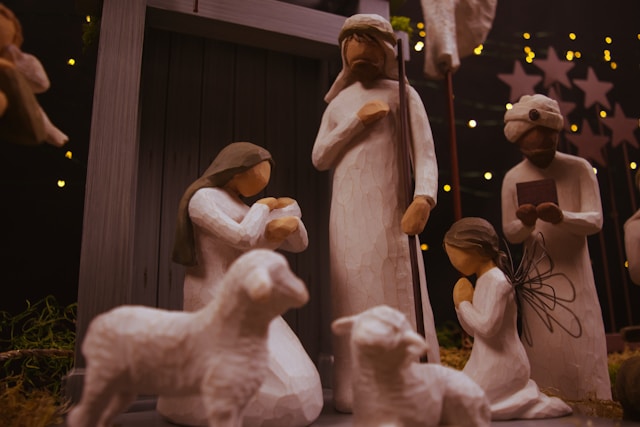what to place here?
Advent & Christmas 2024 ADVENT DEVOTIONS
TBD CHRISTMAS EVE DECEMBER 24, 2024 * 6 PM CHRISTMAS DAY DECEMBER 25, 2024 * 10 AM on the patio |
Advent and Christmas mark the beginning of the Church's year. The "incarnational" seasons are reminders and celebrations of the divine desire to be "born in human likeness" (Philippians 2:7) so that God might draw us back to God's self and that we might live the Trinitarian life.
ADVENT Advent, beginning on the fourth Sunday before Christmas Day, is the first season of the Church's year. The name is derived from the Latin word for "coming" and points to the season being a time of preparation and expectation for the Lord's coming - firstly, in recollection of the nativity and, secondly, in anticipation of Christ coming again "in power and glory." The tradition of keeping Advent began as early as the 4th century CE. The liturgical color for Advent is purple or sarum blue - colors which reflect royalty. The Advent Wreath is a popular devotion with four candles (three purple and one pink) lit successively over the four Sundays/weeks of Advent reminding us of the passage of time and deepening our anticipation. Combined with prayers and devotions, the Advent Wreath serves a point of reflection on four key Advent themes: hope, peace, joy, and love. CHRISTMAS Christmas Day, the feast of the Incarnation, is fixed on the Christian calendar on December 25. Christmas is the remembrance of the historical event of Jesus' birth - the birth of the son of God by a human mother, Mary. Seen through filtered Christian lenses, Christmas is the fulfillment of the promise that God made to Israel through their ancestors: namely, the coming of the Messiah (Christ) who would sit on the throne of David to redeem the people. Recollections of Jesus' birth (or, at least, legends surrounding it) occurred early in Christianity and were recorded with some detail in two of the four gospels (Matthew 1-2 & Luke 1-2). The date of December 25 was chosen by Pope Julius I around 350 CE, a date which spread and reached the farthest reaches of Western Christianity (Great Britain) by the 6th century CE. The liturgical color for Christmas is white or gold, color of celebration and glorification. |
|

